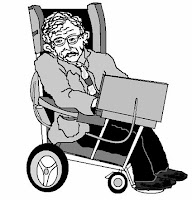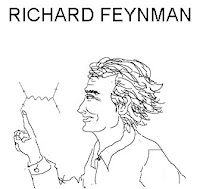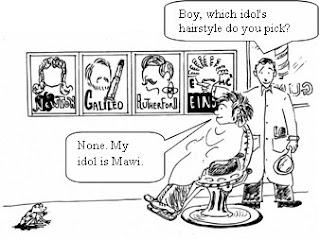In 1905, Einstein wrote five epoch making papers that changed the way we look at physics. Historians call it the annus mirabilis or the miracle year.
In March, Einstein sent to the Annalen der Physik, the leading German physics journal, a paper with a new understanding of the structure of light. He argued that light can act as though it consists of discrete, independent particles of energy, in some ways like the particles of a gas. A few years before, Max Planck's work had contained the first suggestion of a discreteness in energy, but Einstein went far beyond this. His revolutionary proposal seemed to contradict the universally accepted theory that light consists of smoothly oscillating electromagnetic waves. But Einstein showed that light quanta, as he called the particles of energy, could help to explain phenomena being studied by experimental physicists. For example, he made clear how light ejects electrons from metals.
In May, the Annalen der Physik received another paper from Einstein. The well-known kinetic energy theory explained heat as an effect of the ceaseless agitated motion of atoms; Einstein proposed a way to put the theory to a new and crucial experimental test. If tiny but visible particles were suspended in a liquid, he said, the irregular bombardment by the liquid's invisible atoms should cause the suspended particles to carry out a random jittering dance. Just such a random dance of microscopic particles had long since been observed by biologists (It was called "Brownian motion," an unsolved mystery). Now Einstein had explained the motion in detail. He had reinforced the kinetic theory, and he had created a powerful new tool for studying the movement of atoms.
One month later, Einstein sent the Annalen der Physik a paper on electromagnetism and motion. Since the time of Galileo and Newton, physicists had known that laboratory measurements of mechanical processes could never show any difference between an apparatus at rest and an apparatus moving at constant speed in a straight line. Objects behave the same way on a uniformly moving ship as on a ship at the dock; this is called the Principle of Relativity. But according to the electromagnetic theory, developed by Maxwell and refined by Lorentz, light should not obey this principle. Their electromagnetic theory predicted that measurements on the velocity of light would show the effects of motion. Yet no such effect had been detected in any of the ingenious and delicate experiments that physicists had devised: the velocity of light did not vary.
Finally, in September, Einstein reported a remarkable consequence of his special theory of relativity: if a body emits a certain amount of energy, then the mass of that body must decrease by a proportionate amount. Meanwhile he wrote a friend, "The relativity principle in connection with the Maxwell equations demands that the mass is a direct measure for the energy contained in bodies; light transfers mass... This thought is amusing and infectious, but I cannot possibly know whether the good Lord does not laugh at it and has led me up the garden path." Einstein and many others were soon convinced of its truth. The relationship is expressed as an equation: E=mc².
His amazing outburst of creativity that dealt with topics from the smallest scale to the largest through fundamental problems about the nature of energy, matter, motion, time and space--all the while putting in forty hours a week at the patent office still evokes awe.
 Teacher, reach your students. Communicate with them. Try to understand them. Make yourself approachable. Win their trust.
Teacher, reach your students. Communicate with them. Try to understand them. Make yourself approachable. Win their trust.






































